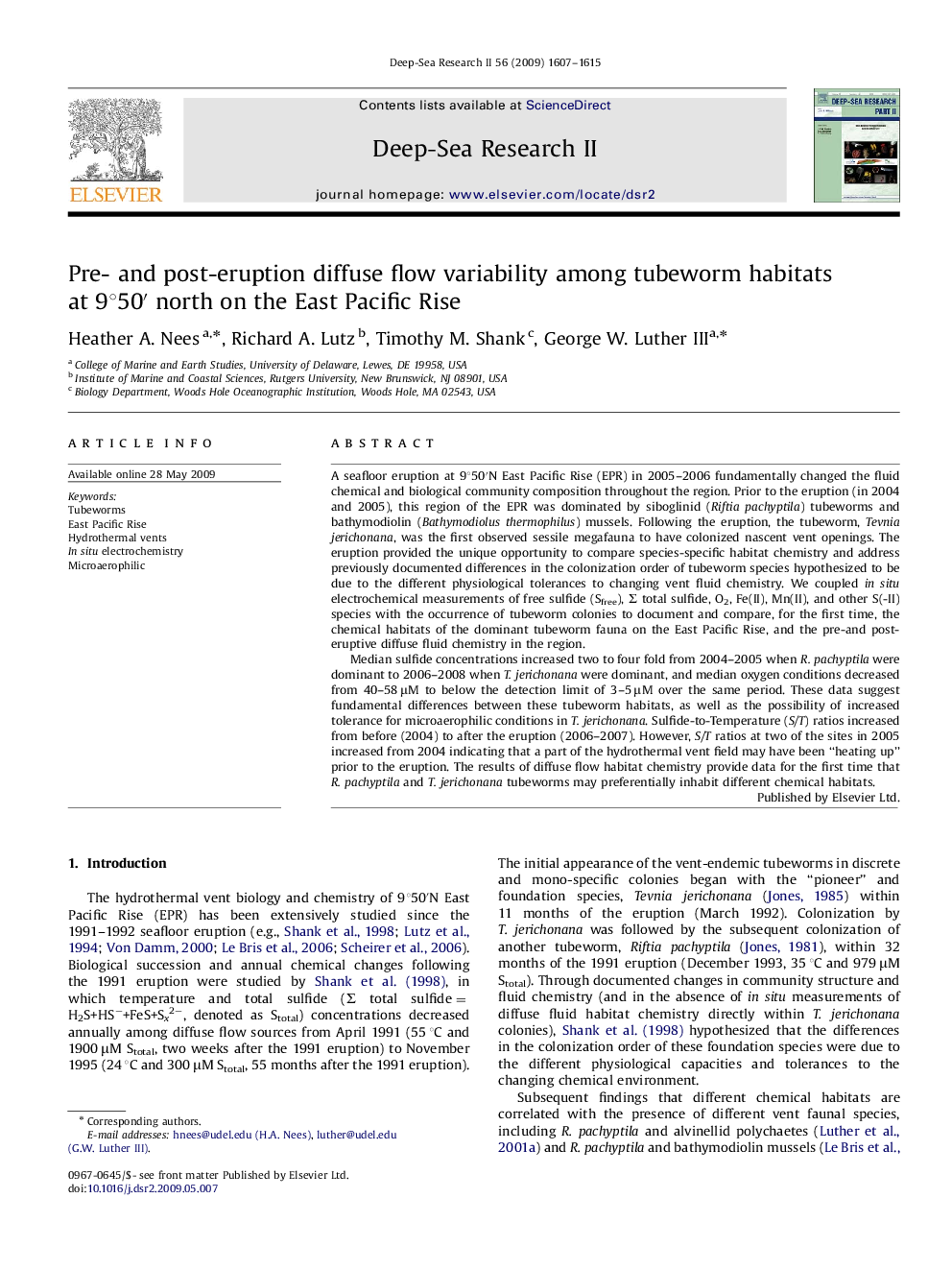| کد مقاله | کد نشریه | سال انتشار | مقاله انگلیسی | نسخه تمام متن |
|---|---|---|---|---|
| 4537284 | 1626482 | 2009 | 9 صفحه PDF | دانلود رایگان |

A seafloor eruption at 9°50′N East Pacific Rise (EPR) in 2005–2006 fundamentally changed the fluid chemical and biological community composition throughout the region. Prior to the eruption (in 2004 and 2005), this region of the EPR was dominated by siboglinid (Riftia pachyptila) tubeworms and bathymodiolin (Bathymodiolus thermophilus) mussels. Following the eruption, the tubeworm, Tevnia jerichonana, was the first observed sessile megafauna to have colonized nascent vent openings. The eruption provided the unique opportunity to compare species-specific habitat chemistry and address previously documented differences in the colonization order of tubeworm species hypothesized to be due to the different physiological tolerances to changing vent fluid chemistry. We coupled in situ electrochemical measurements of free sulfide (Sfree), Σ total sulfide, O2, Fe(II), Mn(II), and other S(-II) species with the occurrence of tubeworm colonies to document and compare, for the first time, the chemical habitats of the dominant tubeworm fauna on the East Pacific Rise, and the pre-and post-eruptive diffuse fluid chemistry in the region.Median sulfide concentrations increased two to four fold from 2004–2005 when R. pachyptila were dominant to 2006–2008 when T. jerichonana were dominant, and median oxygen conditions decreased from 40–58 μM to below the detection limit of 3–5 μM over the same period. These data suggest fundamental differences between these tubeworm habitats, as well as the possibility of increased tolerance for microaerophilic conditions in T. jerichonana. Sulfide-to-Temperature (S/T) ratios increased from before (2004) to after the eruption (2006–2007). However, S/T ratios at two of the sites in 2005 increased from 2004 indicating that a part of the hydrothermal vent field may have been “heating up” prior to the eruption. The results of diffuse flow habitat chemistry provide data for the first time that R. pachyptila and T. jerichonana tubeworms may preferentially inhabit different chemical habitats.
Journal: Deep Sea Research Part II: Topical Studies in Oceanography - Volume 56, Issues 19–20, September 2009, Pages 1607–1615